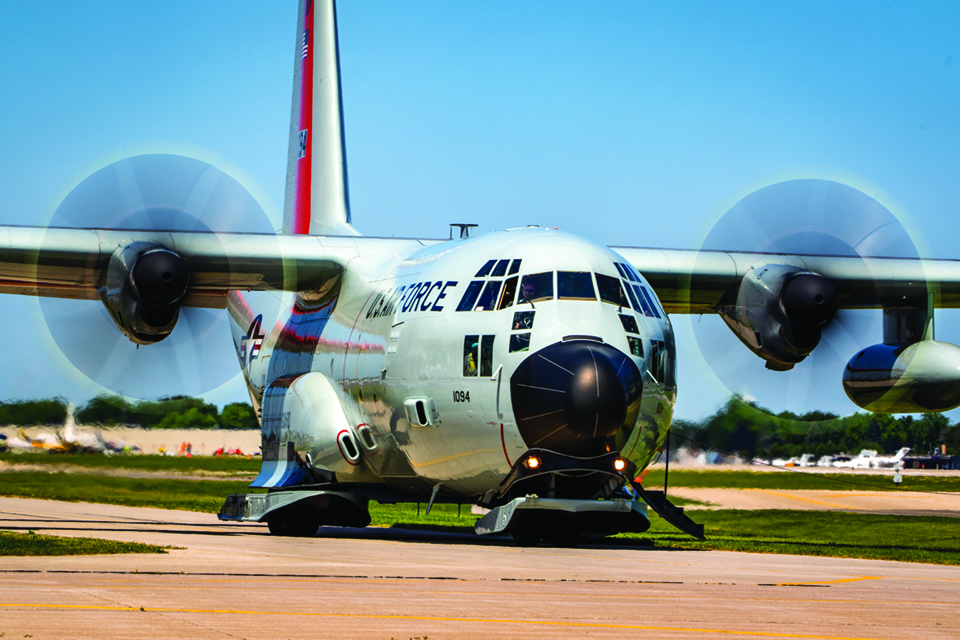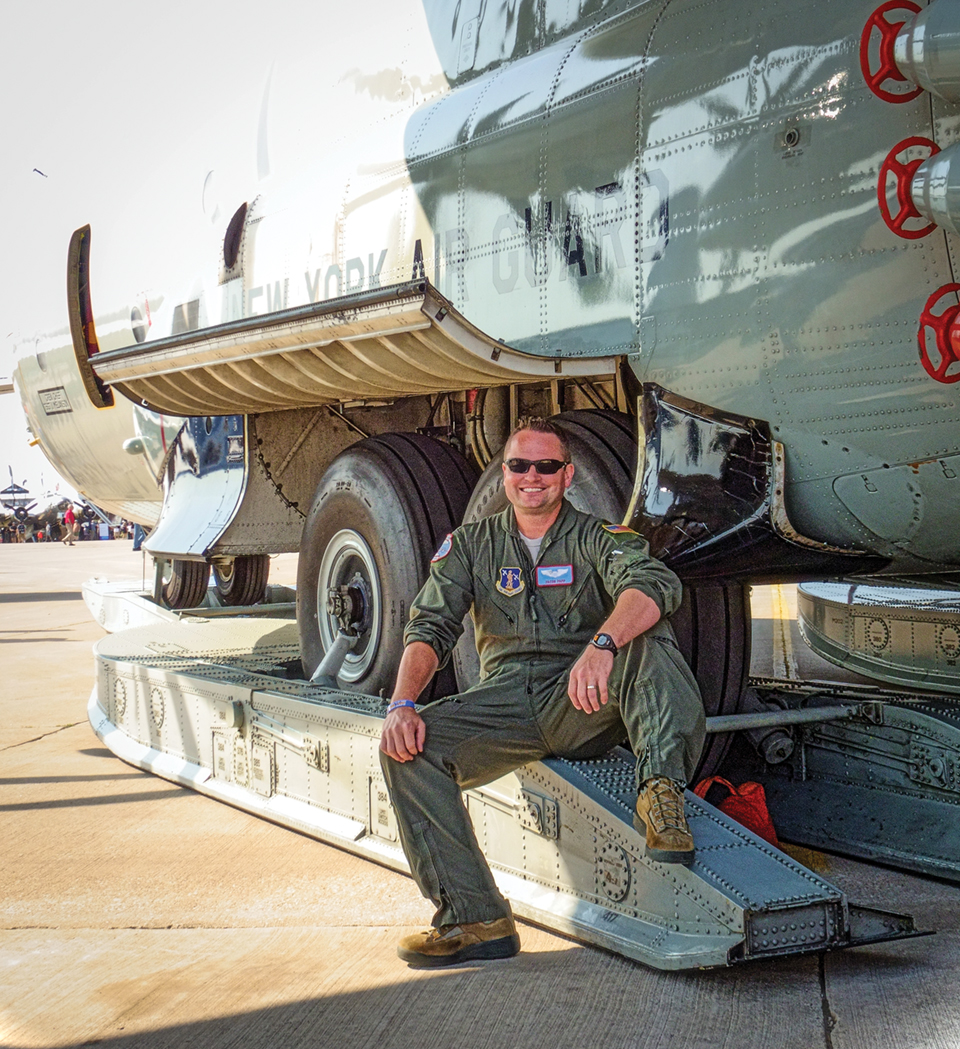Summertime Skiing
By Frederick A. Johnsen
July 25, 2019 - What has eight-blade propellers, eight rocket bottles strapped to the fuselage, retractable snow skis, and parks on Boeing Plaza at AirVenture 2019? The LC-130H Hercules from the 109th Airlift Wing of the New York Air National Guard.
The 109th Wing is the go-to unit for snowbound airlift missions. Its specialized LC-130s work with the National Science Foundation during the summer months in Antarctica, and then when summer comes to the Northern Hemisphere, the ski-130s can be found in Greenland, where crews hone their skills while operating from skiways.
"We're constantly chasing snow," said Maj. Jacob Papp, an LC-130H pilot who came to AirVenture. Summers in Antarctica, while cold and harsh by most standards, provide the only safe time to land on the frozen continent. Winter Antarctic operations are the domain of long-ranging C-17s delivering tons of supplies, often by air, in the darkness of the winter night.
The ski-130 training lately has included experimentation with night vision goggles for landing on the snow in darkness, with the navigator calling out radar altimeter heights from 50 feet in 10-foot increments. When the pilot hears the final 10 feet, the LC-130 is rounded out for landing in an eerie environment devoid of depth perception. On the snow, when the propellers are put into reverse thrust, a blanket of swirling snow rushes forward to obscure visibility outside the cockpit.
When ski-bound, the LC-130H does not use its nose-wheel steering capability. The nose-gear ski casters, and turns are managed by asymmetrical engine throttle movements. Papp said he sometimes has one engine in flight power and an engine on the opposite wing in reverse thrust to turn while on the snow.
Takeoff on skis can be a thrill. Papp said the flight engineer calls out the speed in knots. At 65, the pilot pulls back on the yoke and unsticks the nose ski from the frozen runway. The improved performance of those eight-blade propellers really helps. "We get off so quick now," the major said. With the nose up, "now you know you're going flying," Papp explained.
But it can be a crazy ride, especially on uncharted Antarctic expanses where the LC-130 can hit swells in the snow as high as 6 feet. The pilot may try to get airborne in ground effect at about 80 knots just to be rid of the frozen terrain. Papp has felt the shake of a prestall buffet while he keeps the LC-130 in ground effect to build up airspeed. He said a quick hand on the throttles is needed in case an engine hesitates, to enable the crew to cut power and set down safely on the snow again.
The skis get hammered but are built robust enough to take a beating. Nonetheless, they occasionally need replacement. Back at home base in Schenectady, New York, the Air National Guard has the fixtures and the trained people to build new skis.
He said his unit has corralled the last known supply of JATO (jet-assisted takeoff) bottles in the world — about 600 to 800 of them — to provide a jet-assisted boost if needed. But the conversion to eight-blade propellers has largely obviated the need for rocket assist, so efficient are the new props. For now, the LC-130s still use traditional T56 turboprop engines; Papp said the Rolls-Royce upgrade kits for the T56 will be added, providing greater range and other efficiencies.
Papp was a navigator who transitioned to flight school and the pilot's seat in the C-130. He's flown the LC-130s five seasons and has 11 years total in the C-130. He can sometimes be found near the LC-130 in Boeing Plaza at AirVenture, showing visitors the aircraft's idiosyncrasies.
Some C-130 crew members will recall Air Force efforts to put foam inserts in the underwing fuel tanks to suppress fires. Papp pointed out the tanks on his LC-130 lack the foam, to increase their overall capacity. That comes in handy when the LC-130 is tasked to provide JP-8 fuel to remote Antarctic stations.
The LC-130H crew manifest includes a well-trained navigator who can use classic celestial navigation skills to get the LC-130 on course in the event of an avionics failure over the trackless Antarctic continent where compasses can spin crazily in an aircraft near the South Pole.
There's a dearth of airstrips and refueling options between the LC-130s' home base in Christchurch, New Zealand, and the eight-hour trip to McMurdo Station on the near edge of Antarctica. Winds can change en route from those forecast, so the LC-130 crews must monitor their fuel state, and occasionally when they reach the point of safe return, they must decide to return to their takeoff point rather than risk running out of fuel en route.
In addition to landing on snow airfields, and even on unprepared snowy ground, the LC-130s sometimes airdrop supplies to scientific parties in Antarctica. The life of the specialized LC-130H crews sounds adventurous. Yet Papp, affable and easygoing, doesn't make a big deal of it. "Anybody can do it," he said modestly.
One thing's for sure — anybody can have an interesting chat with Maj. Papp about it at EAA AirVenture Oshkosh.


